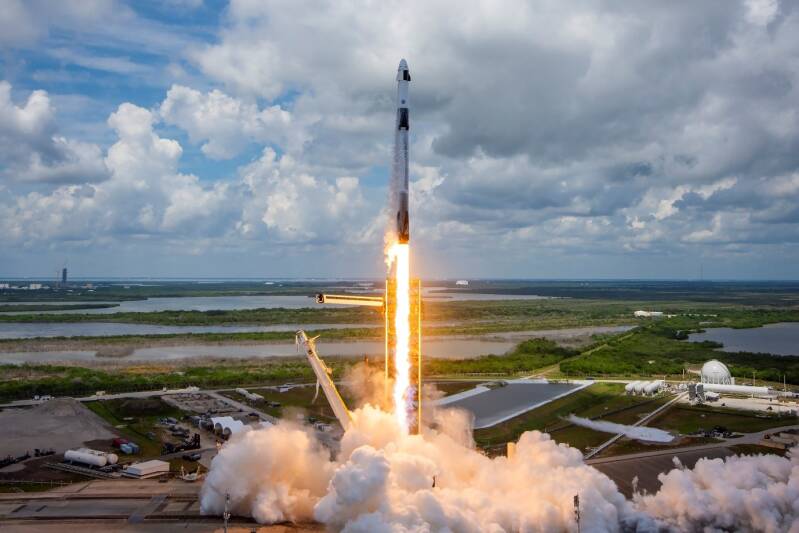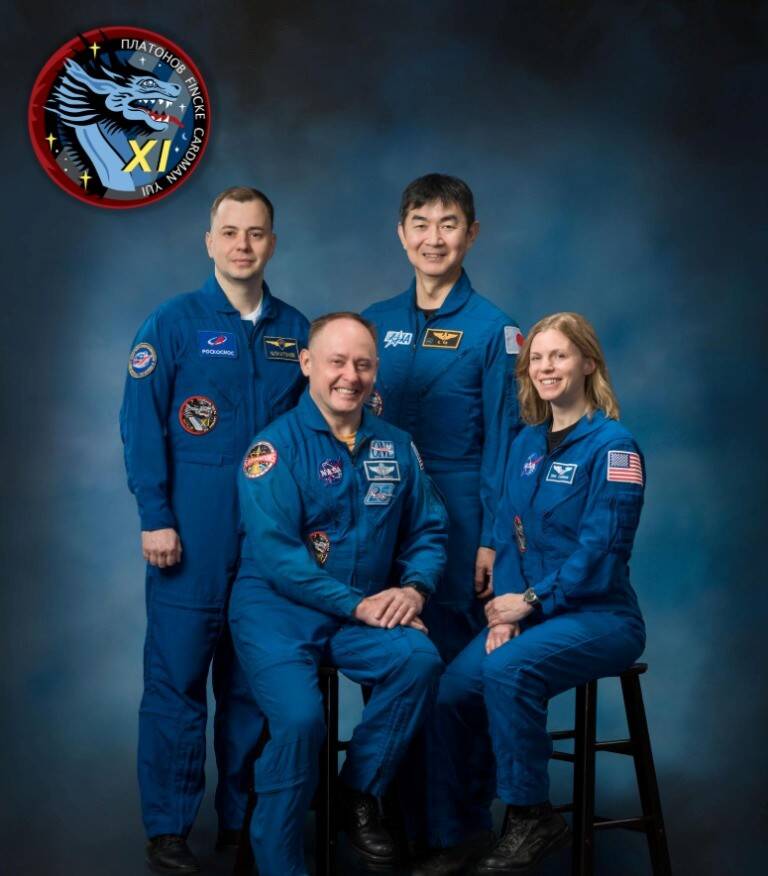A day after their launch was abruptly canceled just a minute before liftoff due to storm clouds, Crew-11 finally soared into orbit today aboard SpaceX’s Crew Dragon Endeavour, heading for the International Space Station (ISS).

Credit: SpaceX
Liftoff occurred at 11:43 a.m. Eastern Time from Launch Complex 39A at NASA’s Kennedy Space Center, a site steeped in history. If all proceeds as planned, Endeavour will dock with the ISS around 3:00 a.m. ET tomorrow morning, August 3.
The launch marks a triumphant return to flight for Endeavour, the same spacecraft that carried NASA astronauts Bob Behnken and Doug Hurley on the landmark Demo-2 mission five years ago—the first time American astronauts launched from U.S. soil since the end of the space shuttle program in 2011. Coincidentally, Endeavour is scheduled to dock with the station on the anniversary of Behnken and Hurley’s return to Earth in 2020.
Onboard Endeavour for this mission are four astronauts representing three space agencies: Commander Zena Cardman and Pilot Mike Fincke of NASA, Mission Specialist Kimiya Yui of the Japan Aerospace Exploration Agency (JAXA), and Oleg Platonov of Russia’s Roscosmos. While Fincke and Yui are seasoned space travelers, both Cardman and Platonov are making their first voyage to space.
Fincke, a veteran of three previous missions (including one aboard the space shuttle and two on Russia’s Soyuz), and Yui, who previously flew on Soyuz in 2015, are also flying on Crew Dragon for the first time—along with their rookie crewmates.

Crew 11, L-R: Oleg Platonov, Mission Specialist (Roscosmos), Mike Fincke, Pilot (NASA), Kimiya Yui, Mission Specialist (JAXA), Zena Cardman, Commander (NASA). Credit: NASA
The mission is also notable for its use of Endeavour, the oldest of SpaceX’s five Crew Dragon spacecraft—alongside Resilience, Endurance, Freedom, and Grace. Initially certified for five missions each, NASA and SpaceX are now working through a meticulous recertification process to extend their lifespans to 15 missions. Endeavour is the first to undergo this process and has currently been cleared for six flights.
NASA also aims to extend the duration that Crew Dragon spacecraft can safely remain docked in orbit. Currently limited to 210 days, the agency hopes to stretch that to around 240 days or more, potentially reducing the number of annual launches and easing strain on NASA’s budget. If approved in time, Crew-11 may remain on the ISS for up to eight months instead of the usual six.
Crew-11 will be aboard the station as it marks 25 years of continuous human habitation on November 2. The ISS, which first welcomed a crew in 2000, is approaching the end of its operational life. The international partners — NASA, Roscosmos, the European Space Agency (ESA), JAXA, and the Canadian Space Agency — plan to deorbit the ISS in late 2030.
Preparing for the End of the ISS Era
Efforts to begin safely winding down ISS operations are already underway. NASA ISS Program Manager Dana Weigel confirmed today that the two-year deorbiting phase is scheduled to begin in 2028. SpaceX is developing the U.S. Deorbit Vehicle (USDV), which will dock with the ISS in 2029 and provide the necessary thrust to guide the 420-metric-ton facility into a remote area of the Pacific Ocean.
Meanwhile, Russia is continuing to stockpile fuel aboard the station, preparing to use propulsion systems on its Zvezda module and Progress cargo vehicles to assist with attitude control during the deorbit process. The Russian and American segments of the ISS remain deeply interdependent, with the U.S. segment supplying power and the Russian side responsible for most reboost maneuvers needed to maintain altitude and avoid orbital debris.
Recent attempts to resolve persistent air leaks in the Russian section’s transfer tunnel—issues ongoing since 2019—have seen some success, but new leaks continue to emerge. Roscosmos’ Deputy Director General Sergei Krikalev, a veteran cosmonaut who was part of the station’s first crew in 2000, said investigators are still working to determine the source of the problem.
Signs of Renewed U.S.-Russia Space Dialogue
While U.S.-Russia relations on Earth remain tense, cooperation in orbit has largely continued undisturbed. A rare meeting took place this week between NASA Acting Administrator Sean Duffy and Roscosmos Director General Dmitry Bakanov during the Crew-11 launch campaign—marking the first face-to-face encounter between the two agencies' leaders since 2018.
Although Bakanov did not attend today’s post-launch briefing as originally planned, NASA’s Associate Administrator for Space Operations, Ken Bowersox, said the talks between Duffy and Bakanov were encouraging.
“At a high level, it was really positive,” Bowersox said. “They had a great connection. They talked about mutual support capabilities — being able to rescue each other’s crews in the future, which is a key part of human spaceflight partnerships.” Their discussion referenced the legacy of the Apollo-Soyuz Test Project, which celebrated its 50th anniversary last month. That 1975 mission saw American and Soviet spacecraft dock in orbit at the height of the Cold War, laying the groundwork for today’s ISS collaboration.
By Azhar


Add comment
Comments